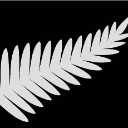Turn on suggestions
Auto-suggest helps you quickly narrow down your search results by suggesting possible matches as you type.
Showing results for
- Home
- /
- Programming
- /
- Programming
- /
- Update dataset columns based on another dataset
Options
- RSS Feed
- Mark Topic as New
- Mark Topic as Read
- Float this Topic for Current User
- Bookmark
- Subscribe
- Mute
- Printer Friendly Page
🔒 This topic is solved and locked.
Need further help from the community? Please
sign in and ask a new question.
- Mark as New
- Bookmark
- Subscribe
- Mute
- RSS Feed
- Permalink
- Report Inappropriate Content
Posted 11-12-2020 01:22 AM
(2720 views)
Hello all,
I have a master dataset with few hundred columns including columns ID, x ,y and status. I have another dataset table2 that also has columns ID and status2.
I want to update the column values of x and y on master dataset based on criteria that involves both master and table2 datasets. I am doing this in teradata sql right now.
Update a
From master a, table2 b
set x=1,y=1
where a.status=‘Inactive’
and b.status2=‘Active’
Can I do the same update with sas datasets?
I have a master dataset with few hundred columns including columns ID, x ,y and status. I have another dataset table2 that also has columns ID and status2.
I want to update the column values of x and y on master dataset based on criteria that involves both master and table2 datasets. I am doing this in teradata sql right now.
Update a
From master a, table2 b
set x=1,y=1
where a.status=‘Inactive’
and b.status2=‘Active’
Can I do the same update with sas datasets?
1 ACCEPTED SOLUTION
Accepted Solutions
- Mark as New
- Bookmark
- Subscribe
- Mute
- RSS Feed
- Permalink
- Report Inappropriate Content
Standard ANSI SQL does this. For example:
data MASTER; A=0; X=0; Y=0; STATUS='Inactive' ;
data TABLE2; A=0; STATUS2='Active';
run;
proc sql;
update MASTER
set X=1,Y=1
where A in (select unique A from TABLE2 where STATUS2='Active')
and STATUS='Inactive';
5 REPLIES 5
- Mark as New
- Bookmark
- Subscribe
- Mute
- RSS Feed
- Permalink
- Report Inappropriate Content
I don't see any join criteria here.How is table b used?
- Mark as New
- Bookmark
- Subscribe
- Mute
- RSS Feed
- Permalink
- Report Inappropriate Content
Chrisnz I missed the join condition on the query. Here is the complete query.
Update a
From master a, table2 b
set x=1,y=1
where a.ID=b.ID
and a.status=‘Inactive’
and b.status2=‘Active’
Update a
From master a, table2 b
set x=1,y=1
where a.ID=b.ID
and a.status=‘Inactive’
and b.status2=‘Active’
- Mark as New
- Bookmark
- Subscribe
- Mute
- RSS Feed
- Permalink
- Report Inappropriate Content
You can do it with SAS datasets, but if the end result has to be a Teradata table, you best do the update there.
- Mark as New
- Bookmark
- Subscribe
- Mute
- RSS Feed
- Permalink
- Report Inappropriate Content
@Kurt_Bremser
I does not have to be a teradata table. I need the output as a sas dataset.
I does not have to be a teradata table. I need the output as a sas dataset.
- Mark as New
- Bookmark
- Subscribe
- Mute
- RSS Feed
- Permalink
- Report Inappropriate Content
Standard ANSI SQL does this. For example:
data MASTER; A=0; X=0; Y=0; STATUS='Inactive' ;
data TABLE2; A=0; STATUS2='Active';
run;
proc sql;
update MASTER
set X=1,Y=1
where A in (select unique A from TABLE2 where STATUS2='Active')
and STATUS='Inactive';
April 27 – 30 | Gaylord Texan | Grapevine, Texas
Registration is open
Walk in ready to learn. Walk out ready to deliver. This is the data and AI conference you can't afford to miss.
Register now and lock in 2025 pricing—just $495!
How to Concatenate Values
Learn how use the CAT functions in SAS to join values from multiple variables into a single value.
Find more tutorials on the SAS Users YouTube channel.
SAS Training: Just a Click Away
Ready to level-up your skills? Choose your own adventure.



